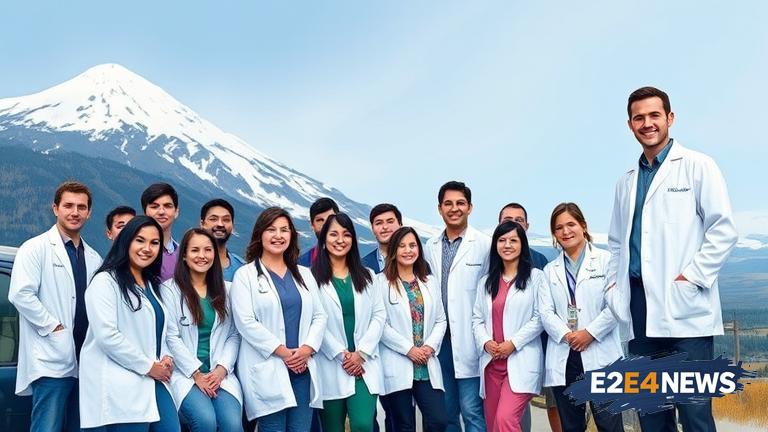The Medical Education Partnership Program in Alaska has just welcomed its largest class ever, with a total of 24 students embarking on a journey to become the state’s future healthcare professionals. This program, which is a collaborative effort between the University of Alaska Anchorage, the University of Washington, and other healthcare organizations, aims to provide students with the necessary education and training to succeed in the medical field. The program’s focus on primary care and rural medicine is particularly significant, given Alaska’s vast and remote geography, which can make it challenging for residents to access healthcare services. By training students to work in these areas, the program hopes to help alleviate the state’s healthcare workforce shortage. The new class of students is diverse, with individuals from various backgrounds and locations throughout Alaska. Many of the students have personal connections to the state and are motivated to stay and work in Alaska after completing their education. The program’s curriculum is designed to provide students with a comprehensive education in medicine, as well as hands-on training and experience in clinical settings. Students will have the opportunity to work with experienced healthcare professionals and gain valuable insight into the challenges and rewards of working in rural and underserved areas. The program also emphasizes the importance of cultural competence and sensitivity, recognizing that Alaska’s diverse population requires healthcare providers who are aware of and responsive to their unique needs. As the students progress through the program, they will have the opportunity to participate in research projects, attend conferences, and engage in other activities that will enhance their knowledge and skills. The program’s faculty and staff are committed to supporting the students every step of the way, providing guidance, mentorship, and encouragement as they navigate the challenges of medical education. The arrival of this new class is a significant milestone for the program, which has been working to address Alaska’s healthcare workforce shortage for many years. The program’s success is critical to the state’s efforts to improve healthcare outcomes and increase access to care, particularly in rural and underserved areas. By training a new generation of healthcare professionals, the program is helping to ensure that Alaskans have access to the care they need, when and where they need it. The program’s impact extends beyond the students themselves, as they will go on to make a positive difference in the lives of their patients and communities. As the program continues to grow and evolve, it is likely to play an increasingly important role in shaping the future of healthcare in Alaska. The state’s healthcare workforce shortage is a complex and multifaceted issue, and the program is just one part of a broader effort to address it. However, the program’s focus on education and training makes it a critical component of this effort, and its success will be closely watched by healthcare leaders and policymakers throughout the state.
